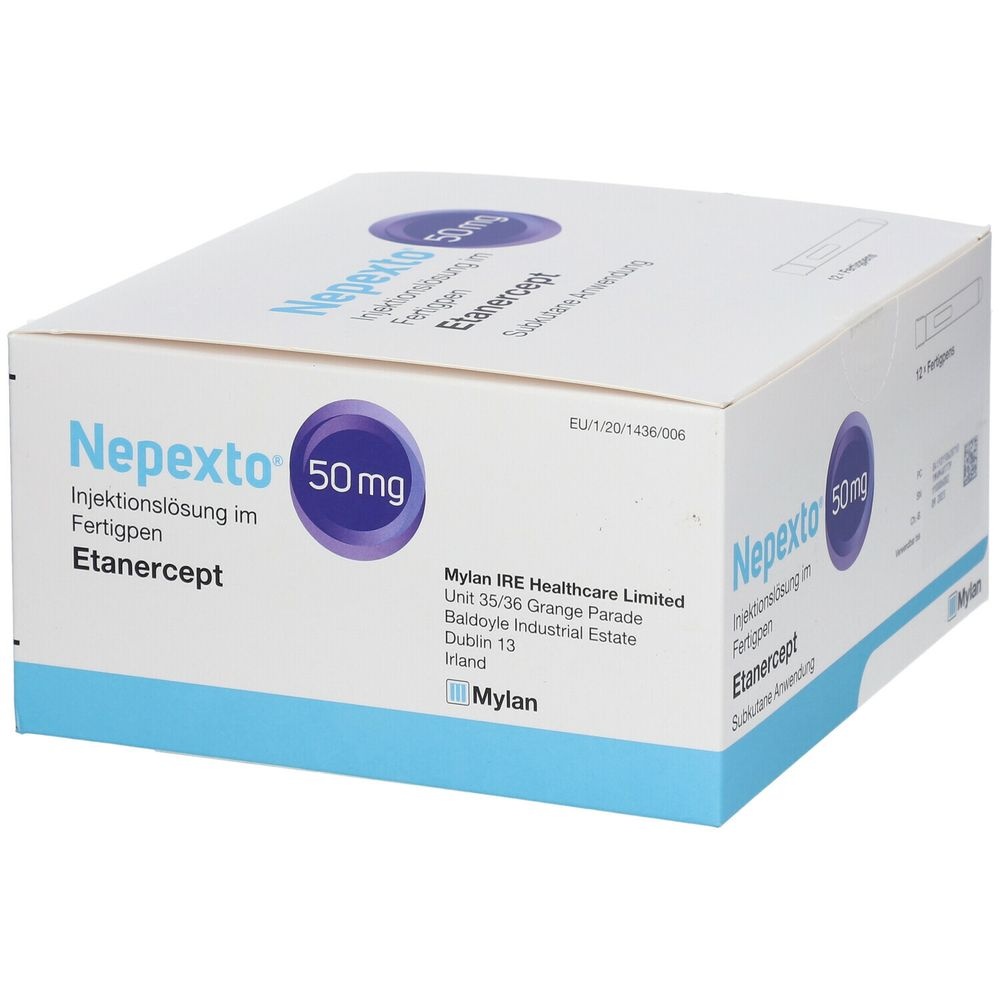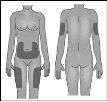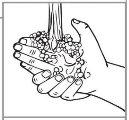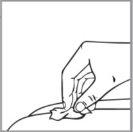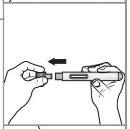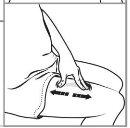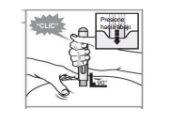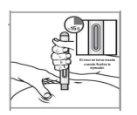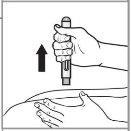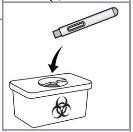
How to use NEPEXTO 50 mg Injectable Solution in Pre-filled Pen
Introduction
Package Leaflet: Information for the User
Nepexto 50 mg solution for injection in pre-filled pen
etanercept
Read all of this leaflet carefully before you start using this medicine because it contains important information for you.
- Keep this leaflet, you may need to read it again.
- Your doctor will also give you a Patient Card, which contains important safety information that you need to know before and during treatment with Nepexto.
- If you have any further questions, ask your doctor, pharmacist, or nurse.
- This medicine has been prescribed for you or for a child in your care. Do not pass it on to others. It may harm them, even if their signs of illness are the same as yours or the child's.
- If you experience any side effects, talk to your doctor or pharmacist. This includes any possible side effects not listed in this leaflet. See section 4.
Contents of the pack
- What is Nepexto and what is it used for
- What you need to know before you use Nepexto
- How to use Nepexto
- Possible side effects
- Storage of Nepexto
- Contents of the pack and other information
- Instructions for use
1. What is Nepexto and what is it used for
Nepexto contains the active substance etanercept.
Nepexto is a medicine that is made from two human proteins. It blocks the action of another protein in the body that causes inflammation. This medicine works by reducing inflammation associated with certain diseases.
Nepexto can be used in adults (from 18 years of age) for:
- Rheumatoid arthritis(an autoimmune disorder that mainly affects the joints) of moderate to severe degree.
- Psoriatic arthritis(a type of inflammatory arthritis that can affect any joint in the body).
- Severe axial spondyloarthritis(a type of chronic inflammatory arthritis that affects the spine or the sacroiliac joints), including ankylosing spondylitis(a type of arthritis that affects the spine).
- Psoriasis(scaly, red, and raised areas on the skin) of mild to moderate degree.
Nepexto is normally used when other treatments that are commonly used have not worked adequately, or when those treatments are not suitable for the patient.
In the treatment of rheumatoid arthritis, this medicine is usually used in combination with methotrexate, although it can also be used as the only medicine if treatment with methotrexate is not suitable for the patient. Nepexto can slow down the damage caused by rheumatoid arthritis to the joints and improve the ability to perform daily activities, whether used alone or in combination with methotrexate.
In patients with psoriatic arthritiswith multiple joint involvement, this medicine can improve the ability to perform normal daily activities.
In patients with multiple symmetrical joints that are swollen or painful(e.g., hands, wrists, and feet), this medicine can delay the progression of structural damage to these joints caused by the disease.
Nepexto is also indicated for the treatment of children and adolescents with the following diseases:
- For the following types of juvenile idiopathic arthritis when treatment with methotrexate has not worked adequately, or when methotrexate is not suitable for them:
- Polyarthritis (with positive or negative rheumatoid factor) and extended oligoarthritis in patients from 2 years of age and 62.5 kg of body weight.
- Psoriatic arthritis in patients from 12 years of age and 62.5 kg of body weight.
- For enthesitis-related arthritis in patients from 12 years of age and 62.5 kg of body weight, when the use of other treatments that are commonly used has not worked adequately, or when those treatments are not suitable for them.
- For severe psoriasis in patients from 6 years of age and 62.5 kg of body weight who have had an inadequate response to (or are unable to take) phototherapies or other systemic therapies.
2. What you need to know before you use Nepexto
Do not use Nepexto
- If you or the child in your care are allergic to etanerceptor to any of the other ingredients of Nepexto(listed in section 6). If you or the child experience allergic reactions, such as chest tightness, wheezing, dizziness, or rash, do not inject more Nepexto and contact your doctor immediately.
- If you or the child have or are at risk of developing a severe blood infectioncalled sepsis. If you are not sure, consult your doctor.
- If you or the child have any type of infection. If you are not sure, consult your doctor.
Warnings and precautions
Consult your doctor before starting treatment with Nepexto.
- Allergic reactions: If you or the child experience allergic reactions, such as chest tightness, wheezing, dizziness, or rash, stop using this medicine and contact your doctor immediately.
- Infections/surgery: If you or the child develop a new infection or are about to undergo major surgery, your doctor may want to monitor treatment with this medicine.
- Infections/diabetes: Inform your doctor if you or the child have a history of recurrent infections or if you have diabetes or other disorders that increase the risk of infection.
- Infections/monitoring: Inform your doctor of any recent travel outside the European region. If you or the child develop symptoms of an infection such as fever, chills, or cough, notify your doctor immediately. Your doctor should decide whether to continue monitoring you or the child for the presence of infections after you or the child stop treatment with Nepexto.
- Tuberculosis: Since cases of tuberculosis have been reported in patients treated with Nepexto, your doctor will examine the signs and symptoms of tuberculosis before starting this medicine. This may include a thorough medical history, chest X-ray, and a tuberculosis test. The performance of these tests should be recorded on the Patient Card. It is very important that you tell your doctor if you or the child have had tuberculosis or have been in close contact with someone who has had tuberculosis. If symptoms of tuberculosis (such as persistent cough, weight loss, apathy, moderate fever) or any other infection appear during or after treatment, inform your doctor immediately.
- Hepatitis B: Inform your doctor if you or the child have or have had hepatitis B. Your doctor should perform a hepatitis B test before you or the child start treatment with this medicine. Treatment with Nepexto may reactivate hepatitis B in patients who have previously been infected with the hepatitis B virus. If this occurs, you should stop using this medicine.
- Hepatitis C: Inform your doctor if you or the child have hepatitis C. Your doctor may want to monitor treatment with this medicine if the infection worsens.
- Blood disorders: Inform your doctor immediately if you or the child have signs or symptoms such as persistent fever, sore throat, bruising, bleeding, or pallor. Such symptoms may be due to a serious blood problem that requires interruption of treatment with Nepexto.
- Nervous system and vision disorders: Inform your doctor if you or the child have multiple sclerosis, optic neuritis (inflammation of the optic nerves), or transverse myelitis (inflammation of the spinal cord). Your doctor will decide whether this medicine is a suitable treatment.
- Congestive heart failure: Inform your doctor if you or the child have a history of congestive heart failure (the heart muscle does not pump blood as it should), because this medicine should be used with caution in these circumstances.
- Cancer: Inform your doctor if you have or have had lymphoma (a type of blood cancer) or any other cancer before you are given this medicine. Patients with severe rheumatoid arthritis who have had the disease for a long time may be at a higher than average risk of developing lymphoma. Children and adults who are taking this medicine may have an increased risk of developing lymphoma or other cancers. Some adolescent and child patients who have received etanercept or other medicines that work in the same way as etanercept have developed cancers, including rare types, which sometimes resulted in death. Some patients who receive Nepexto have developed skin cancer. Inform your doctor if you or the child develop any changes in the appearance of the skin or growths on the skin.
- Chickenpox: Inform your doctor if you or the child are exposed to chickenpox while using this medicine. Your doctor will determine whether preventive treatment for chickenpox is appropriate.
- Alcoholism: Do not use this medicine for the treatment of alcohol-related hepatitis. Inform your doctor if you or the child in your care have a history of alcoholism.
- This medicine is not recommended for the treatment of Wegener's granulomatosis, a rare inflammatory disease. Inform your doctor if you or the child in your care have Wegener's granulomatosis.
- Anti-diabetic medicines: Inform your doctor if you or the child have diabetes or are taking medicines to treat diabetes. Your doctor may decide whether you or the child need less anti-diabetic medicine while taking this medicine.
Children and adolescents
- Vaccinations: If possible, children should have all vaccinations up to date before using Nepexto. Some vaccines, such as oral polio vaccine, should not be given while using this medicine. Consult your doctor before you or the child use any vaccine.
Nepexto should not be used in children and adolescents who weigh less than 62.5 kg.
Nepexto should not be used in children under 2 years of age with polyarthritis or extended oligoarthritis, in children under 12 years of age with enthesitis-related arthritis or psoriatic arthritis, or in children under 6 years of age with psoriasis.
Using Nepexto with other medicines
Inform your doctor or pharmacist if you or the child are using, have recently used, or might use any other medicines (including sulfasalazine), even those not prescribed by your doctor.
You or the child must not useNepexto with medicines that contain the active substances anakinra or abatacept.
Pregnancy and breastfeeding
Nepexto should only be used during pregnancy if clearly necessary. Consult your doctor if you are pregnant, think you may be pregnant, or plan to become pregnant.
If you have received Nepexto during pregnancy, your baby may be at a higher risk of infection. Additionally, in one study, more birth defects were observed when the mother had received etanercept during pregnancy, compared to mothers who had not received this medicine or other similar medicines (TNF antagonists), but there was no pattern in the types of birth defects reported. Another study did not find an increased risk of congenital defects when the mother had received etanercept during pregnancy. Your doctor will help you decide whether the benefits of treatment outweigh the potential risk to your baby.
Consult your doctor if you want to breastfeed while being treated with Nepexto. It is important that you inform the pediatrician and other healthcare professionals about the use of Nepexto during pregnancy and breastfeeding before your baby receives any vaccine.
Driving and using machines
Nepexto is not expected to affect the ability to drive and use machines.
Nepexto contains sodium
This medicine contains less than 1 mmol (23 mg) of sodium per dose, which is essentially "sodium-free".
3. How to use Nepexto
Follow the instructions for administration of this medicine exactly as told by your doctor. If you are not sure, ask your doctor or pharmacist.
If you think that the action of Nepexto is too strong or too weak, talk to your doctor or pharmacist.
Use in adults
Rheumatoid arthritis, psoriatic arthritis, and axial spondyloarthritis, including ankylosing spondylitis
The usual dose is 25 mg administered twice a week or 50 mg administered once a week, by injection under the skin.
However, your doctor may decide on an alternative frequency for injecting Nepexto.
Psoriasis
The usual dose is 25 mg twice a week or 50 mg once a week.
Alternatively, 50 mg may be administered twice a week for a maximum of 12 weeks, followed by 25 mg twice a week or 50 mg once a week.
Your doctor will decide how long you should use Nepexto and whether you need to repeat treatment based on your response. If Nepexto does not have an effect on your disease after 12 weeks, your doctor may advise you to stop using this medicine.
Use in children and adolescents
The suitable dose and frequency of administration will depend on the child's or adolescent's body weight and disease.
Your doctor will tell you how to prepare and measure the suitable dose of etanercept for the child.
Nepexto should not be used in children and adolescents who weigh less than 62.5 kg.
Other medicines that contain etanercept with a formulation suitable for children are available.
For polyarthritis or extended oligoarthritis in patients from 2 years of age, or enthesitis-related arthritis or psoriatic arthritis in patients from 12 years of age, the usual dose is 0.4 mg of etanercept per kg of body weight (up to a maximum of 25 mg) twice a week, or 0.8 mg of etanercept per kg of body weight (up to a maximum of 50 mg) once a week.
For psoriasis in patients from 6 years of age, the usual dose is 0.8 mg of etanercept per kg of body weight (up to a maximum of 50 mg) once a week. If Nepexto does not have an effect on the child's disease after 12 weeks, your doctor may advise you to stop using this medicine.
Form and route of administration
Nepexto is administered by injection under the skin (subcutaneously).
In section 7: "Instructions for use", detailed instructions for the preparation and injection of Nepexto are included.
The solution should not be mixed with any other medicine.
To help you remember, it may be useful to note in a diary which days of the week you should use Nepexto.
If you use more Nepexto than you should
If you use more Nepexto than you should (either by injecting a higher dose at one time or by using it more frequently), you should talk to a doctor or pharmacist immediately. Always carry the medicine pack with you, even if it is empty.
If you forget to inject Nepexto
If you miss a dose, you should inject it as soon as you remember, unless the next dose is scheduled for the next day, in which case you should omit the missed dose. Then, continue injecting the medicine on the usual day(s). If you do not remember until the day you are due to have the next dose, do not inject a double dose (two doses on the same day) to make up for the missed dose.
If you stop treatment with Nepexto
Your symptoms may return after stopping treatment.
If you have any further questions on the use of this medicine, ask your doctor or pharmacist.
4. Possible Adverse Effects
Like all medicines, this medicine can cause adverse effects, although not all people suffer from them.
Allergic Reactions
If you observe any of the following reactions, do not inject more Nepexto . Inform your doctor immediately or go to the Emergency Service of the nearest hospital.
- Difficulty swallowing or breathing.
- Swelling of the face, throat, hands, and feet.
- Feeling of nervousness or anxiety, palpitations, sudden reddening of the skin and/or feeling of heat.
- Severe rash, itching, or urticaria (prominent skin rashes, reddened or pale, often accompanied by itching).
Severe allergic reactions are rare. However, any of the above symptoms may be a sign of an allergic reaction to this medicine, so you should seek urgent medical attention immediately.
Severe Adverse Effects
If you notice any of the following effects, you or the child may need urgent medical attention.
- Signs of severe infections, such as high fever that may be accompanied by cough, shortness of breath, chills, weakness, or a painful, sensitive, reddened, and hot area on the skin or joints.
- Signs of blood disorders, such as bleeding, bruising, or paleness.
- Signs of nervous system disorders, such as numbness or tingling, vision changes, eye pain, or weakness in an arm or leg.
- Signs of heart failure or worsening heart failure, such as fatigue or shortness of breath with activity, swelling of the ankles, feeling of fullness in the neck or abdomen, shortness of breath at night, or cough, blue discoloration of the nails or around the lips.
- Signs of cancer: cancer can affect any part of the body, including the skin and blood, and the possible signs will depend on the type and location of the cancer. These signs may include, among others, weight loss, fever, swelling (with or without pain), persistent cough, presence of lumps or thickenings on the skin.
- Signs of autoimmune reactions (in which antibodies that can damage normal body tissues develop) such as pain, itching, weakness, and abnormal breathing, thinking, sensation, or vision.
- Signs of lupus or lupus-like syndrome, such as weight changes, persistent rash, fever, muscle or joint pain, or fatigue.
- Signs of inflammation of the blood vessels, such as pain, fever, redness, or heat of the skin, or itching.
These adverse effects are rare or infrequent, but they are serious conditions (some of which can be life-threatening). If any of the above occurs, inform your doctor immediately or go to the Emergency Service of the nearest hospital.
The following is a list of known adverse effects of etanercept, grouped in decreasing order of frequency:
- Very Common(may affect more than 1 in 10 people):
Infections (including colds, sinusitis, bronchitis, urinary tract infections, and skin infections); injection site reactions (including bleeding, bruising, redness, itching, pain, and swelling) (do not occur as frequently after the first month of treatment; some patients have developed a reaction at the injection site used recently); and headache.
- Common(may affect up to 1 in 10 people):
Allergic reactions; fever; itching; antibodies directed against normal tissues (formation of autoantibodies).
- Uncommon(may affect up to 1 in 100 people):
Severe infections (including pneumonia, non-superficial skin infections, joint infections, blood infections, and generalized infections); worsening of congestive heart failure; low red blood cell count, low white blood cell count, low neutrophil count (a type of white blood cell); low platelet count; skin cancer (excluding melanoma); localized skin swelling (angioedema); urticaria (prominent skin rashes, reddened or pale, often accompanied by itching); eye inflammation; psoriasis (new or worsening); inflammation of the blood vessels affecting multiple organs; increased liver enzymes in blood tests (in patients who also receive treatment with methotrexate, the increase in liver enzymes is frequent); abdominal cramp and pain, diarrhea, weight loss, or blood in stool (signs of intestinal problems).
- Rare(may affect up to 1 in 1,000 people):
Severe allergic reactions (including severe localized skin swelling and wheezing); lymphoma (a type of blood cancer); leukemia (cancer that affects the blood and bone marrow); melanoma (a type of skin cancer); combined low count of red blood cells, white blood cells, and platelets; nervous system disorders (with severe muscle weakness and symptoms similar to those of multiple sclerosis or inflammation of the optic nerves or spinal cord); tuberculosis; new-onset congestive heart failure; seizures; lupus or lupus-like syndrome (symptoms may include persistent rash, fever, joint pain, and fatigue); skin rash that can lead to severe blistering and peeling of the skin; lichenoid reactions (itchy reddish-purple skin rash and/or thick white-gray lines on the mucous membranes); autoimmune hepatitis (in patients who also receive treatment with methotrexate, the frequency is uncommon); sarcoidosis (an immune disorder that can affect the lungs, skin, and lymph nodes); lung inflammation or scarring (in patients who also receive treatment with methotrexate, the frequency of lung inflammation or scarring is uncommon), damage to the small filters within the kidneys, leading to impaired kidney function (glomerulonephritis).
- Very Rare(may affect up to 1 in 10,000 people):
Failure of the bone marrow to produce crucial blood cells.
- Frequency Not Known(cannot be estimated from the available data):
Merkel cell carcinoma (a type of skin cancer); Kaposi's sarcoma, a rare cancer related to human herpesvirus 8 infection. Kaposi's sarcoma usually manifests more frequently as purple skin lesions; excessive activation of white blood cells associated with inflammation (macrophage activation syndrome); reactivation of hepatitis B (a liver infection); worsening of a disease called dermatomyositis (inflammation and weakness of the muscles accompanied by skin rash).
Other Adverse Effects in Children and Adolescents
The adverse effects observed in children and adolescents, as well as their frequencies, are similar to those described above.
Reporting of Adverse Effects
If you experience adverse effects, consult your doctor or pharmacist, even if they are not listed in this leaflet. You can also report them directly through the Spanish Pharmacovigilance System for Human Use Medicines: included in Annex V.
By reporting adverse effects, you can contribute to providing more information on the safety of this medicine.
5. Storage of Nepexto
Keep this medicine out of the sight and reach of children.
Do not use this medicine after the expiry date stated on the packaging and the pre-filled pen after "EXP". The expiry date is the last day of the month indicated.
Store in a refrigerator (between 2 °C and 8 °C). Do not freeze.
Keep the pre-filled pens in the outer packaging to protect them from light.
After removing the pre-filled pen from the refrigerator, wait approximately 30 minutes for the Nepexto solution in the pre-filled pen to reach room temperature. Do not heat it in any other way. Use it immediately.
Nepexto can be stored outside the refrigerator at a maximum temperature of 25 °C, and for a single period of up to four weeks; after which, the medicine cannot be refrigerated again. Nepexto must be discarded if it has not been used within the four weeks following its removal from the refrigerator. It is recommended that you note the date on which Nepexto was removed from the refrigerator and the date from which Nepexto must be discarded (not later than 4 weeks from the removal of the packaging from the refrigerator).
Inspect the solution in the pen. It should be between transparent and opalescent, colorless or yellow, and may contain small white or almost transparent protein particles. This is the normal appearance of Nepexto. Do not use the solution if it is discolored or cloudy, or if it contains particles other than those described above. If you are concerned about the appearance of the solution, contact your pharmacist.
Medicines should not be disposed of via wastewater or household waste. Ask your pharmacist how to dispose of the packaging and medicines that are no longer needed. This will help protect the environment.
6. Container Contents and Additional Information
Nepexto Composition
- The active ingredient is etanercept. Each pre-filled pen contains 50 mg of etanercept.
- The other components are sodium citrate, disodium phosphate dihydrate, glycine, sucrose, sodium chloride, and water for injection.
Product Appearance and Container Contents
Nepexto is presented as a pre-filled pen containing a clear to opalescent, colorless or yellow solution for injection.
Nepexto is available in packs containing 4 or 12 pre-filled pens. Not all pack sizes may be marketed.
Marketing Authorization Holder
Biosimilar Collaborations Ireland Limited
Unit 35/36
Grange Parade,
Baldoyle Industrial Estate,
Dublin 13
DUBLIN
Ireland
D13 R20R
Manufacturer
Biosimilar Collaborations Ireland Limited
Block B, The Crescent Building, Santry Demesne
Dublin
D09 C6X8
Ireland
For further information on this medicinal product, please contact the local representative of the marketing authorization holder:
Belgium Biocon Biologics Belgium BV Tel: 0080008250910 | Lithuania Biosimilar Collaborations Ireland Limited Tel: 0080008250910 |
| Luxembourg Biocon Biologics France S.A.S Tel: 0080008250910 |
Czech Republic Biocon Biologics Germany GmbH Tel: 0080008250910 | Hungary Biosimilar Collaborations Ireland Limited Tel: 0080008250910 |
Denmark Biocon Biologics Finland OY Tel: 0080008250910 | Malta Biosimilar Collaborations Ireland Limited Tel: 0080008250910 |
Germany Biocon Biologics Germany GmbH Tel: 0080008250910 | Netherlands Biocon Biologics France S.A.S Tel: 0080008250910 |
Estonia Biosimilar Collaborations Ireland Limited Tel: 0080008250910 | Norway Biocon Biologics Finland OY Tel: +47 800 62 671 |
Greece Biocon Biologics Greece ΜΟΝΟΠΡΟΣΩΠΗ Ι.Κ.Ε Tel: 0080008250910 | Austria Biocon Biologics Germany GmbH Tel: 0080008250910 |
Spain Biocon Biologics Spain S.L. Tel: 0080008250910 | Poland Biosimilar Collaborations Ireland Limited Tel: 0080008250910 |
France Biocon Biologics France S.A.S Tel: 0080008250910 | Portugal Biocon Biologics Spain S.L. Tel: 0080008250910 |
Croatia Biocon Biologics Germany GmbH Tel: 0080008250910 | Romania Biosimilar Collaborations Ireland Limited Tel: 0080008250910 |
Ireland Biosimilar Collaborations Ireland Limited Tel: 1800 777 794 | Slovenia Biosimilar Collaborations Ireland Limited Tel: 0080008250910 |
Iceland Biocon Biologics Finland OY Tel: +345 800 4316 | Slovakia Biocon Biologics Germany GmbH Tel: 0080008250910 |
Italy Biocon Biologics Spain S.L. Tel: 0080008250910 | Finland Biocon Biologics Finland OY Tel: 99980008250910 |
Cyprus Biosimilar Collaborations Ireland Limited Tel: 0080008250910 | Sweden Biocon Biologics Finland OY Tel: 0080008250910 |
Latvia Biosimilar Collaborations Ireland Limited Tel: 0080008250910 |
Date of Last Revision of this Leaflet:
Detailed information on this medicinal product is available on the European Medicines Agency website: http://www.ema.europa.eu,
- Instructions for Use
Read the instructions for use before starting to use Nepexto and each time you receive a refill of your prescription. It may contain new information.
- Do not attempt to self-inject unless your doctor or nurse has shown you how to do it.
The pack does not include:
- Alcohol swab
- Gauze and plaster
- Sharps container
Device Parts
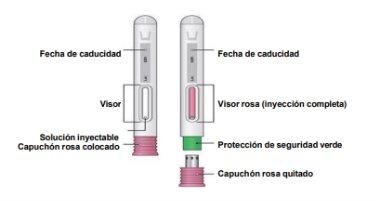
- Preparation for Injection
Find a flat, clean, and well-lit surface and gather all the necessary items.
Please read section 5, which includes instructions for storing Nepexto. If you have any doubts about storage, contact your doctor, nurse, or pharmacist for more detailed information.
| |
Examine the medicine through the viewer.
| |
Remove a pre-filled pen from the pack stored in the refrigerator and let it sit at room temperature for at least 30 minutes before injecting. This is important so that the medicine can be injected more easily and comfortably.
| |
The pre-filled pen is for subcutaneous injection. It should be injected into the thigh, abdomen, or the upper outer area of the buttocks (see the image on the right). Alternate the injection site each time. |
|
If you inject into the abdomen, choose a site that is at least 5 cm away from the navel. |
|
- Injection Steps
Step 1: Wash your hands with soap and water. |
|
Step 2: Clean the skin at the injection site with an alcohol swab. See section 4: "Choosing an injection site" for information on how to choose the injection site.
|
|
Step 3: Pull the needle cap straight off and dispose of it in a sharps container or puncture-proof container.
|
|
Step 4: Gently stretch the skin at the cleaned injection site. Place the pre-filled pen at approximately a 90-degree angle to the skin.
|
|
Step 5: Firmly press the pre-filled pen against the injection site to start the injection. The device will click when the injection starts. Continue to hold the pre-filled pen firmly against the injection site. The device will click a second time. |
|
Step 6: After the second click, slowly count to 15 to make sure the injection is complete.
|
|
Step 7: Remove the empty pre-filled pen from the skin. The needle shield will cover the needle completely. Check that the plunger rod is pink in the viewer to ensure that the full dose has been administered. |
|
Disposal: Dispose of the empty pre-filled pen in an approved sharps container. Ask your healthcare provider for instructions on how to dispose of the filled sharps container properly. Sharps containers can be obtained from a pharmacy.
|
|
- Care of the Injection Site
If bleeding occurs at the injection site, press the area with a gauze.
- Do not rub the injection site.
If necessary, cover the injection site with a plaster.
If you have any doubts or need more information, contact your doctor, nurse, or pharmacist.
- Country of registration
- Active substance
- Prescription requiredYes
- Manufacturer
- This information is for reference only and does not constitute medical advice. Always consult a licensed doctor before taking any medication. Oladoctor is not responsible for medical decisions based on this content.
- Alternatives to NEPEXTO 50 mg Injectable Solution in Pre-filled PenDosage form: INJECTABLE, 25 mgActive substance: etanerceptManufacturer: Samsung Bioepis Nl B.V.Prescription requiredDosage form: INJECTABLE, 50 mgActive substance: etanerceptManufacturer: Samsung Bioepis Nl B.V.Prescription requiredDosage form: INJECTABLE, 50mgActive substance: etanerceptManufacturer: Samsung Bioepis Nl B.V.Prescription required
Alternatives to NEPEXTO 50 mg Injectable Solution in Pre-filled Pen in other countries
The best alternatives with the same active ingredient and therapeutic effect.
Alternative to NEPEXTO 50 mg Injectable Solution in Pre-filled Pen in Ukraine
Online doctors for NEPEXTO 50 mg Injectable Solution in Pre-filled Pen
Discuss dosage, side effects, interactions, contraindications, and prescription renewal for NEPEXTO 50 mg Injectable Solution in Pre-filled Pen – subject to medical assessment and local rules.



